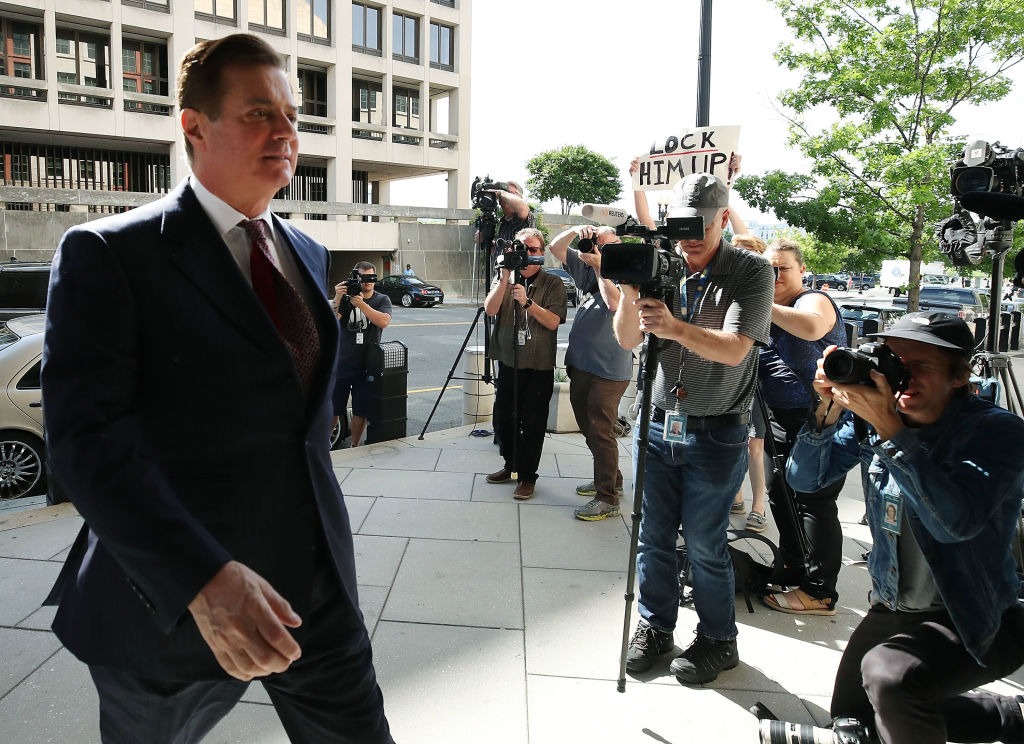Spotlight: Supporting Solitary for Manafort Means Supporting It for Everyone
Yesterday the news broke that Paul Manafort, President Trump’s former campaign head who was sentenced to seven and a half years in prison on federal charges, will now face criminal charges in state court in Manhattan. The New York Times reports that Manafort will most likely be held at Rikers Island, segregated from the general population. […]

Yesterday the news broke that Paul Manafort, President Trump’s former campaign head who was sentenced to seven and a half years in prison on federal charges, will now face criminal charges in state court in Manhattan. The New York Times reports that Manafort will most likely be held at Rikers Island, segregated from the general population. Though it is not clear that Manafort would be confined to his cell even if he is isolated, many reports have said he will be in “solitary confinement.”
Tens of thousands of people, by conservative estimates, spend their days in solitary confinement cells in jails and prisons across the United States. (An oft-cited estimate of 61,000 people in isolation nationwide is understood, including by those who arrived at it, to be a substantial undercount.) But it made news that Manafort was expected to be sent to Rikers and isolated.
Some responded with satisfaction to the report that a previously powerful rich white man, closely associated with the president, would be subjected to the same abuse as masses of poor Black and brown people. But that response is an example of how ending injustice can seem so impossible that our hopes warp into a desire to expand injustice.
The problem is not that the Manaforts of the world don’t usually spend time in solitary, or in prison. The problem is that tens of thousands of people around the country sit in what are, effectively, torture chambers.
In his memoir published this year, Albert Woodfox recounted how, over his 40-plus years in solitary confinement, Louisiana prison authorities tried to break him, but he survived. Until laws like those now under consideration in New York and New Jersey are passed, we still permit corrections officers and prison officials the power to break people.
In a comprehensive portrait of the ravages of solitary and the opportunities for ending it, Stephanie Wykstra wrote in April for Vox: “Solitary confinement causes extreme suffering, particularly over prolonged periods of months or years. Effects include anxiety, panic, rage, paranoia, hallucinations, and, in some cases, suicide.” Supporting solitary for Manafort at Rikers ignores the suffering of thousands of others, held in New York state prisons and local jails in extreme isolation, sometimes for decades, as Joshua Manson described in The Appeal this week.
It also ignores the most promising effort to end prolonged solitary, currently underway, that the state has seen. The HALT Solitary Confinement Act incorporates the limits and protections long-recommended by human rights experts and now commands the support of a majority of New York’s lawmakers in both chambers. It would eliminate the use of solitary for groups who are especially vulnerable to the psychological and physical effects of isolation, and place an absolute limit of 15 days on isolation for anyone. Crucially, it would mandate the creation of rehabilitative units where people who need to be separated from the general population for extended periods of time would be placed (subject to periodic review) with a guarantee of seven hours out of cells each day and the chance to participate in programming and receive services more conducive to rehabilitation.
New York would not be the first state to make sizable reductions to the number of people in isolation and the length of time in solitary. Colorado and North Dakota have implemented substantial reforms, though not through legislation. Colorado limits time in solitary to 15 days. New Jersey lawmakers are considering the Isolated Confinement Restriction Act, which is similar to New York’s bill and passed in 2016 before it was vetoed by former governor Chris Christie.
With only two weeks left in New York’s legislative session, it remains to be seen whether the “blue wave” that swept Democrats to control will translate into action against solitary, action that has the support of human rights organizations, city councils, and faith leaders, among others. The state previously enacted modest reforms, as part of a settlement. But as the New York Civil Liberties Union, which negotiated the settlement, has pointed out, those reforms were a first step and prolonged isolation is still a reality. If the HALT Solitary Confinement bill becomes law, it would take those reforms much further and apply to prisons and jails across New York, including Rikers.
In 2009, Atul Gawande investigated solitary confinement and its consequences for the New Yorker in what is still one of the most wide-ranging and compelling examinations of the practice.
Gawande recognized that the punitive impulse runs deep in the U.S.
“The simple truth is that public sentiment in America is the reason that solitary confinement has exploded in this country, even as other Western nations have taken steps to reduce it,” he wrote. “This is the dark side of American exceptionalism. With little concern or demurral, we have consigned tens of thousands of our own citizens to conditions that horrified our highest court a century ago. Our willingness to discard these standards for American prisoners made it easy to discard the Geneva Conventions prohibiting similar treatment of foreign prisoners of war, to the detriment of America’s moral stature in the world. In much the same way that a previous generation of Americans countenanced legalized segregation, ours has countenanced legalized torture. And there is no clearer manifestation of this than our routine use of solitary confinement—on our own people, in our own communities, in a supermax prison, for example, that is a thirty-minute drive from my door.”
This Spotlight originally appeared in The Daily Appeal newsletter. Subscribe here.
